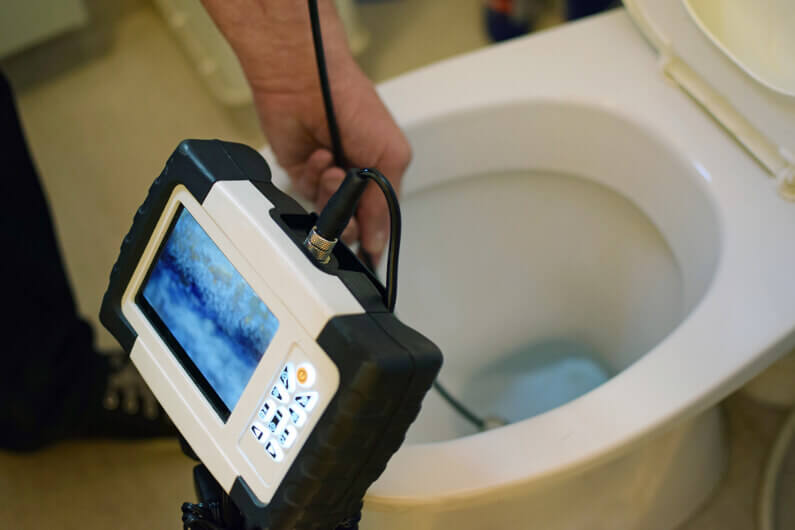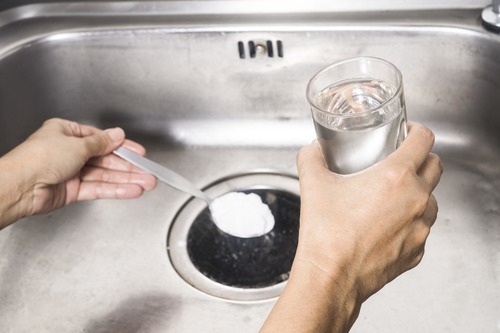Strategies for Handling a Blocked Drain Prior to Reaching out to Expert Help
Strategies for Handling a Blocked Drain Prior to Reaching out to Expert Help
Blog Article
Are you currently interested in details about What I learned from trying to deal with a clogged drain?

Intro
Dealing with a blocked drain can be a discouraging experience, interfering with day-to-day tasks and potentially triggering damages to your residential property. Nevertheless, before reaching out to plumbing specialists, there are actions you can take to deal with the issue on your own. In this guide, we'll check out DIY options and safety nets to deal with a blocked drain successfully.
Identifying the Concern
The initial step in dealing with an obstructed drain is acknowledging the signs. Sluggish water drainage, gurgling sounds, foul odors emanating from drains, or water support up are common indicators of an obstructed drainpipe. Identifying these indications early can assist protect against further complications.
Choosing the Right Plumbing Service
When choosing a plumbing solution, think about elements such as experience, licensing, and customer evaluations. Choose a reputable plumbing professional with a track record of high quality craftsmanship and clear rates practices.
Cost Factors to consider
The cost of specialist drain cleaning company can vary depending upon the intensity of the obstruction and the plumber's rates. Demand quotes from multiple carriers and ask about any added fees to ensure openness and stay clear of surprises.
Safety Precautions
When trying DIY drainpipe cleaning, focus on safety and security. Use safety gloves and eyeglasses to stay clear of contact with damaging chemicals or microorganisms. Never mix various drainpipe cleaning items, as this can generate hazardous fumes.
Situation Researches
Real-life instances highlight the effectiveness of DIY options and the importance of timely professional intervention in fixing drainpipe obstructions.
Typical Root Causes Of Obstructed Drainpipes
Recognizing the variables that add to drain pipes obstructions is vital for effective resolution. Common offenders include hair, soap scum, oil, food particles, and foreign objects like sanitary items or paper towels. Tree origins invading underground pipes can also create substantial blockages.
DIY Solutions
For minor obstructions, several DIY solutions can be effective. Pouring boiling water down the drain can help dissolve grease and debris. Sodium bicarbonate and vinegar or a mixture of salt and baking soft drink can serve as natural cleaners. Making use of a plunger or pipes serpent to displace blockages is another choice.
Tools and Devices
Having the right tools accessible can make do it yourself drainpipe cleaning a lot more efficient. A plunger is a versatile tool for removing obstructions in sinks, commodes, and showers. A pipes serpent or auger can get to much deeper obstructions, while drainpipe cleansing chemicals can be utilized meticulously for stubborn blockages.
Preventive Measures
To avoid future blockages, taking on safety nets is crucial. Mount drainpipe guards or strainers to catch hair and particles before they enter the pipes. Regularly flush drains pipes with hot water to dissolve oil accumulation, and prevent throwing away grease or strong waste down the drain.
When to Call a Specialist
While DIY options can resolve small blockages, specific indicators suggest the demand for expert support. Consistent clogs, foul odors despite cleaning up initiatives, or numerous drains pipes supporting simultaneously are red flags that warrant skilled treatment.
Verdict
By adhering to the ideas outlined in this guide, you can properly deal with obstructed drains pipes and avoid future plumbing problems. Whether choosing DIY options or looking for specialist aid, punctual activity is crucial to preserving a healthy pipes system and preserving the honesty of your home.
How to Clear a Clogged Drain Yourself (And When to Call In the Professionals)
What Can Clog a Drain
Dirt Skin flakes Hair Grease Soap scum Food Offset pipes Tree roots Small objects Mineral buildup DIY Tricks to Unclog a Drain
You can fix this! Once you have identified the source of the clog (or have a vague idea), you can try one or a combination of these fixes in order to clear your plumbing.
Wire Hanger or Snake
Untangle and clear out hair from a drainpipe with a homemade snake. Use a straightened-out wire hanger with a 90-degree angle hook to locate the clog and drag out any unwanted material.
Remember not to push the clog further down to where the wire hanger cannot reach! If you need to follow up with a plunger, give it a try. Your efforts might be more successful after it’s been wire-snaked.
If you want to get fancy and don’t have a wire hanger to spare, head to the store and pick up a hand-operated drain snake. You can get one for $10-$30. It may save you the hassle, and provide additional length to reach deep into the clogged pipe.
Plunger
A cup plunger has a suction cup attached to a wooden handle. The rubber creates a seal around the drain, and increases the pressure force of the plunger.
Plunge for 30-second increments to loosen the clog. This may need to be repeated over the course of 15-20 minutes. Once plunged, run the water to flush the remaining material out of the drain.
Remember– never use a plunger if you have used a chemical drain cleaner. These chemicals can splash up from the force of the plunger and cause serious injury or burns.
Boiling Water
Hot water can sometimes break up materials into a flushable amount. Dirt, grease, and soap buildup requires heat in order to unstick from surfaces.
Take your kitchen kettle and heat your water to a boil. Once it reaches a rolling boil, pour it directly down the drain into the blockage. Carefully follow with plunging, if necessary.
Don’t worry if this takes more than one try! It can often take multiple kettles and repeated plunging in order to clear a particularly stubborn clog.
Chemical Drain Cleaner
As a last resort, pick up a bottle of chemical drain cleaner. Drain-cleaning chemicals are potent, and not very good for the environment.
You may need to wear protective eyewear in gloves before handling your bottle of chemical drain cleaner. Follow the instructions printed on the bottle, and flush with water as soon as the instructions allow. Do not follow with plunging.
Baking Soda and Vinegar
As a safer alternative to chemical drain cleaner, baking soda and vinegar can create a chemical reaction that clears tough clogs.
Combine one cup of cleaning vinegar with one cup of boiling water, and set aside. Once you have done this, pour half a cup of baking soda down the drain. Give the baking thirty seconds to settle and cover a large portion of the problem drain.
Following the baking soda, pour down your vinegar and hot water solution. Once the vinegar and baking soda combine, the mixture will bubble and fix. Let this reaction fizzle in the drain for about an hour.
After an hour, follow with a kettle’s worth of hot water. The heat and liquid should flush out any remaining material.
When to Call a Plumber
If your DIY attempts haven’t cleared your clog drain, it’s time to call in a professional. It’s not worth losing access to your kitchen sink or high-traffic bathroom. A clog in a vital area can keep you from the things you’d rather be doing, and derail your routine.
Anytime a clog is causing water to spread is a time to call in a plumbing service. What starts out as a little bit of water can quickly grow into serious, expensive water damage.
Additionally, a serious clog can result in burst pipes or serious leaks. Make sure you know when to take it seriously!
https://myguysnow.com/how-to-clear-a-clogged-drain-yourself-and-when-to-call-in-the-professionals/

Do you appreciate more info about Some easy tips to fix blocked drains? Give feedback down the page. We would be happy to see your opinions about this write-up. Hoping that you visit us again before long. In case you appreciated our blog posting please consider to pass it around. Thank you so much for going through it.
Schedule A Service Report this page